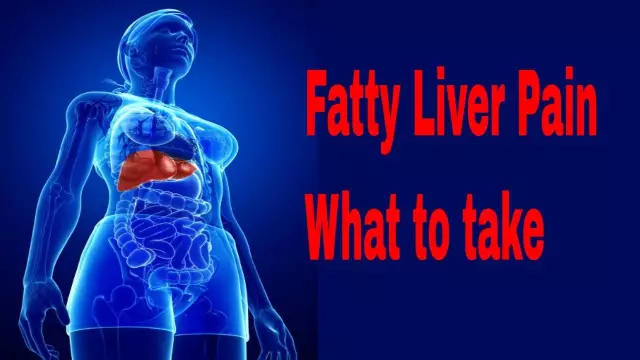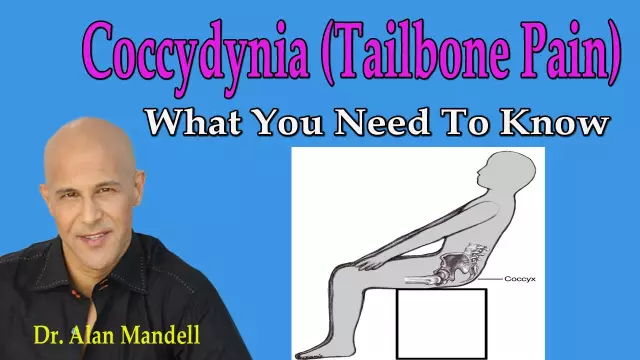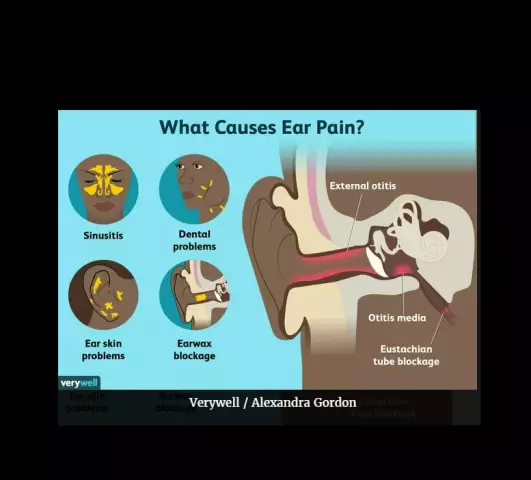- Author Rachel Wainwright [email protected].
- Public 2023-12-15 07:39.
- Last modified 2025-11-02 20:14.
Ischium
The ischium is one of the three bones that together with the ilium and pubic pelvic bone form. After 16-17 years, these bones are connected with the help of cartilage, and later, after complete ossification of the cartilage, the boundaries between them are completely smoothed out.

Located at the base of the spine, the bones of the pelvis, coccyx and sacrum serve as a bone receptacle and support for the vital organs located in this area, and also provide attachment to the trunk of the lower extremities.
The structure of the ischium
The structure of the ischial bone is distinguished:
- The body of the bone, which forms the acetabulum (posterior inferior region);
- The branches of the ischium.
The ischial spine (bony protrusion) is located on the back of the bone body.
The posterior obturator tubercle of the ischium is located at the anterior edge of the branch of the bone.
The ischial tubercle in the form of a thickening with a rough surface is located on a curved section of the branch (posterior inferior surface).
The lower part of the ischial branch grows together with the pubic bone (lower branch).
The ischium and pubic bones limit the obturator opening, along the upper edge of which there is a wide obturator groove with the vessels and nerves of the same name.
Causes of pain in the sciatic bone
Pain in the pelvic bones can be caused by various causes, including both trauma and inflammatory diseases of the hip joint and infectious processes.
A fracture of the ischial bone most often occurs due to a fall on the buttocks or when the pelvis is compressed. The ischial bones hurt, usually with movement, especially when the lower leg is flexed. Clarify the diagnosis using radiography.
Treatment of sciatic fractures should begin with numbing the fracture site. In most cases, with unilateral and some bilateral fractures of the ischial bone without displacement of bone fragments, it is enough just to take a mid-physiological position with divorced limbs or use a special orthopedic bed. The entire treatment period usually takes no more than a month.
Full recovery after a fracture, as well as a full load on the leg, is possible no earlier than seven weeks later. For rehabilitation after a fracture of the sciatic bone, physiotherapy, massage and physiotherapy exercises are used.
When the fragments are displaced, it is necessary to carry out treatment using a skeletal traction system for the condyles of the femur. In cases where the treatment is not carried out on time, this can eventually lead to the development of osteoarthritis of the hip joint with a pronounced violation of the supporting function of the limb.
The sciatic bones also hurt:
- For intensive sports. In this case, pain can be caused by both heavy loads and inflammatory processes, for example, inflammation of the ischial bursa (sciatic-gluteal bursitis), which often occurs during cycling. In inflammatory processes, as a rule, drug treatment and physiotherapy are carried out;
- With tumors of the pelvic bones. Depending on the rate at which the tumor grows, pain can be felt both on the bone and in the tissues surrounding it. This is most common in fibrosarcoma or histiocytoma;
- In diseases of the blood system, namely in acute leukemia, diseases of the bone marrow, erythremia, chronic myeloid leukemia, myeloma;
- Against the background of the development of infectious diseases such as tuberculosis and osteomyelitis of the pelvic bones;
- In metabolic bone diseases, as a result of impaired resorption or formation of bone tissue due to a deficiency of minerals in food, impaired absorption in the intestine, or due to a deficiency or impaired metabolism of vitamin D.
Found a mistake in the text? Select it and press Ctrl + Enter.






